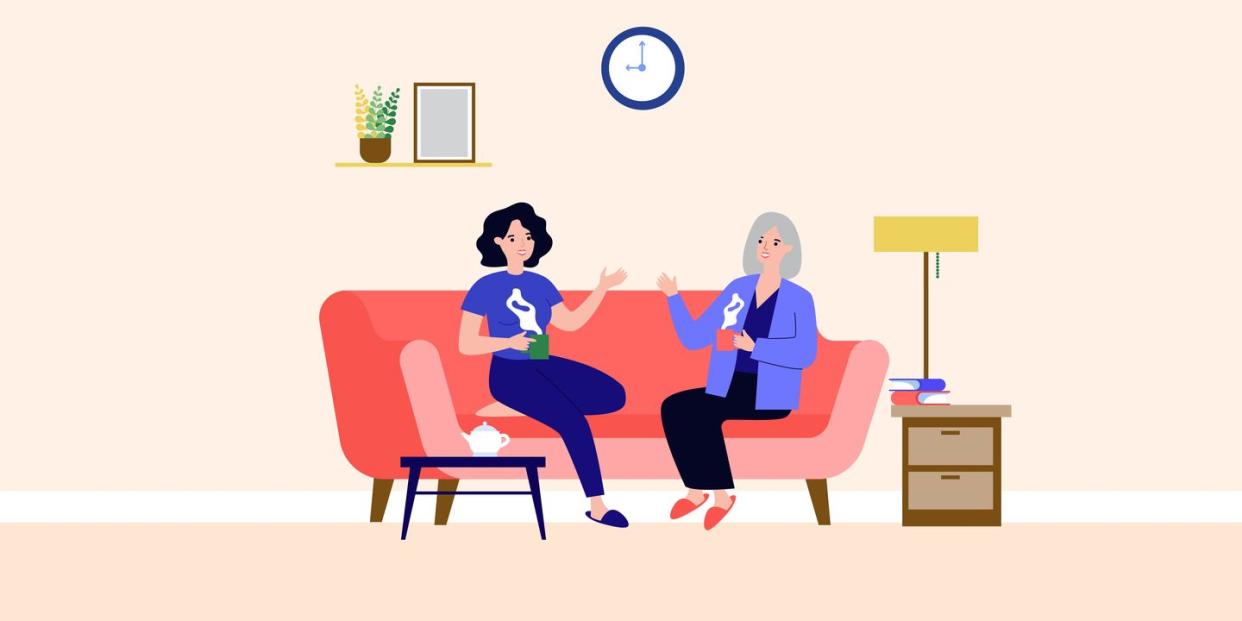What My Grandmother Taught Me About Designing My Forever Home

“Hearst Magazines and Verizon Media may earn commission or revenue on some items through the links below.”
Some words stay with you for a lifetime, even when you can’t recall the day or even the year you heard them. My widowed grandmother was in her 80s when she told me that she’d like to move into a smaller place, but the two bedroom, two bathroom apartment I was visiting was the only rental she’d found close to my parents that had a standalone shower. She was afraid of falling if she had to climb in and out of a tub regularly. Recalling her earlier stories of dancing onstage with Cab Calloway when she was younger, my heart broke a little for her. It was not an uncommon fear, I’d later learn, one I decided to help relieve when I could.
Our conversation inspired me to become a Certified Aging in Place Specialist, so I could create safer homes for seniors like my grandmother. It also continually inspires me to make my own home as safe, accessible and health-enabling as I can—especially as I’m now close to being a senior myself at 60.
In the decades between then and now, I have also gained, lost, and mostly kept off about 100 pounds, earned two more professional certifications, started my own design firm, and written three books. The common thread between them was how your home could help you be healthier in the most practical terms possible.
I’m always more drawn to spaces and products that are more functional than fancy, low maintenance than lavish, and more about durability than the style du jour. It makes staying healthy and active easier in my San Diego townhouse, particularly during this challenging pandemic era.
Let’s step back a dozen years, to when I was a workaholic 233-pound couch potato about to be divorced. I worried that I’d have a heart attack or a stroke if I didn’t get moving again! Over time, I segued from swimming laps to training for marathons, obstacle course races, military-style endurance events and, most recently, a Kilimanjaro summit. (Had it not been for COVID, I would have gone last December; now I’m planning a December 2021 trek.)
Related: 6 Things a Senior Living Designer Recommends Investing in for Aging in Place
What these athletic pursuits have in common is frequent muscle aches, a need for healthy calories and solid sleep, and staying motivated to get off the couch and train! I’ve organized my townhouse to help with all of these needs—and to serve as my gym, since it closed last March.
The first change I made was replacing the tile floors in my kitchen with laminate and placing my anti-fatigue mat between the range and island, where I spend the most time prepping and cooking. The last thing you want when you’re training for a long, hard athletic event is to be sore and tired even before you start. The new floors and mat made a huge difference. I also added organizers to my kitchen to make it more convenient and accessible to meal prep and clean up afterward, and a countertop combi-steam oven and slow cooker for healthy, convenient cooking.
My bathroom got a handheld massaging showerhead, which is great for relieving sore muscles and cleaning grit out of hard to reach places from trail days. My bedroom windows got room darkening panels, which have been helpful in blocking outside lights from disrupting my sleep, and a ceiling fan for ambient noise and greater climate comfort.
My other wellness design efforts have added houseplants for their biophilic benefits, patio enhancements for much-needed private outdoor use, and personalized art selections, family heirlooms and low maintenance furniture for healthy living.
After all, as my grandmother made clear to me all those years ago, good design is about much more than looks.
Jamie Gold, CKD, CAPS, MCCWC is a Mayo Clinic Certified Wellness Coach, certified aging-in-place consultant, and the author of three books on design and remodeling, including Wellness by Design: A Room-by-Room Guide to Optimizing Your Home for Health, Fitness and Happiness, (Tiller Press) published September 1.
You Might Also Like


